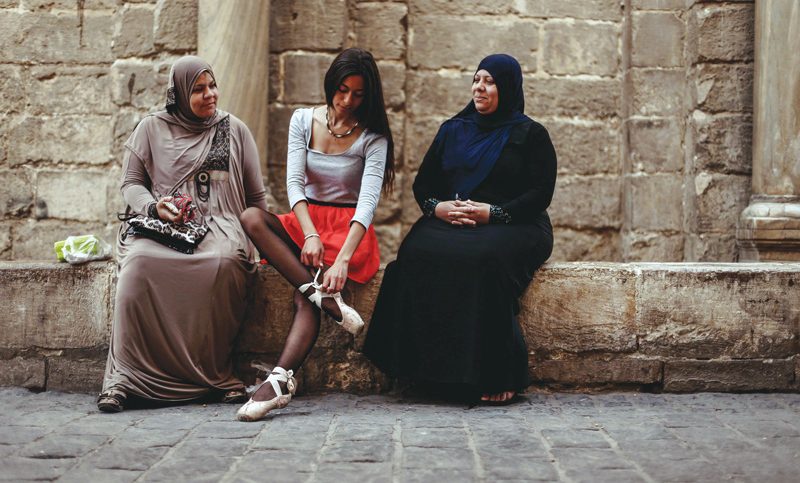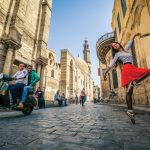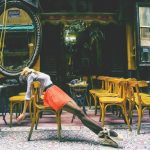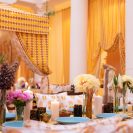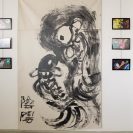The beauty and gracefulness of a ballerina is one that is not lost on anyone. There’s something so elegant about the way they move, that anyone watching is instantly mesmerized. While many will have you believe that everything has its time and place, we stumbled across a project that does the exact opposite: Using Cairo as the backdrop for this delicate art form. And in late 2015, the Ballerinas of Cairo project was born. Having started as a passion project by film director Mohamed Taher and Ahmed Fathy, it has since taken a life of its own and continues to grow wonderfully.
Inspiration came to Mohamed when he came across NYC’s Ballerina Project and thought he can do something similar in Cairo. “Our main goal with Ballerinas of Cairo is to explore Cairo from different perspectives and to showcase the diversity within the city,” he explained, “Adding a ballerina to this backdrop creates a beautiful contrast between the roughness that is Cairo and the smooth, delicate lines of created by the ballerinas.” It also gave them the perfect opportunity to promote an alternative Cairo – one that is hidden away from the public eye, and to spread joy within the communities as they conduct the photoshoots. But how are the backdrops decided? “For each photoshoot we [the photographers] choose the theme,” Mohamed added, “but sometimes the ballerinas themselves wants to shoot in a specific location or in a certain style. It’s a group effort!” Since we still had many questions on our mind, we managed to track Mohamed down and sat with him to learn more about the project and the incredible people behind it.
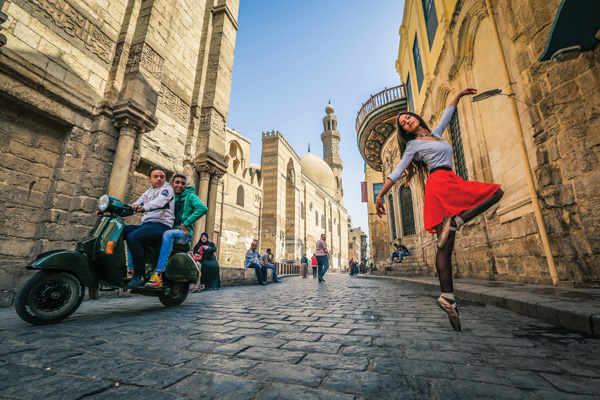
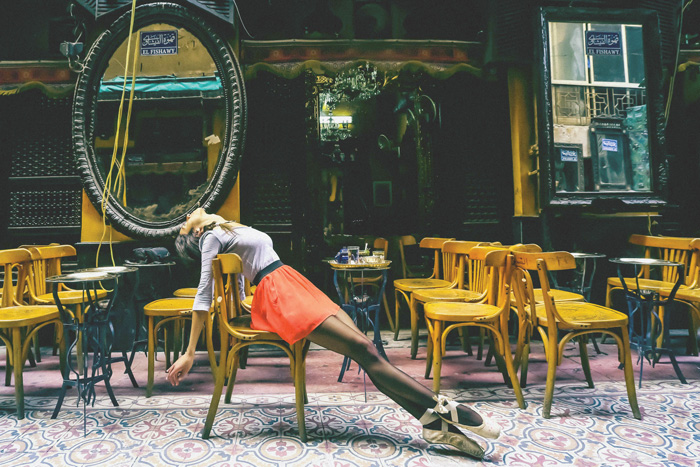
When you and Ahmed Fathy started Ballerinas of Cairo, it was just the two of you – is that still the case or do you now have a team?
We have a team who joined us for the documenting process and sometimes they go out and do photoshoots as well – such as Sherif Ashour, Amir El Shenawy and Aya Ahmed.
Can you tell us more about your background?
I’m a freelance Producer and Film Director by trade – usually producing documentaries, commercials and shorts. I also work as an assistant director for feature films and most recently for the movie ‘Clash’, Eshtebak , directed by Mohamed Diab. Originally though, I studied Photography in the Savannah College of Art and Design in the U.S. I then went on to do my MFA in Film Directing at the same university. Currently, I do some photography, but for very particular and carefully selected projects – but my main job is in the film industry.
How do you select the ballerinas?
We select ballerinas based on previous images we’ve seen or by recommendations from their friends who are already a part of the project.
Do you plan each photo’s composition or do you pick a location and keep snapping until you find ‘the one’?
For some locations we decide on the composition ahead of time. But sometimes, we just pick a location and figure out the most suitable look and feel after we get to the location.
What are some of the challenges you face when taking these photos?
The biggest and most difficult challenge is making what we do seem normal. We need people to start accepting all types of performance arts in our streets. There’s an abundance of hidden gems and beauty that we just tend to ignore on a daily basis, and bringing art out onto the streets can revive this beauty. So, our main challenge was to get people used to seeing us shooting and filming in the streets, and to create an awareness for our art.
Truth be told, it’s kind of risky taking such photos in Egypt, especially during this critical time where we’ve all witnessed real social problems. Sadly, the streets of the city aren’t very friendly for both women and photographers alike. But the ballerinas have shown so much courage by going out and doing this in the streets. They’ve pushed the boundaries and tested the limits beyond to display their art, and themselves, freely.
How are people reacting to the project – on location and when a post goes up?
When out on location, people were impressed by how brave these ballerinas were by dancing in their tutus and soaring in the streets. They sometimes even approach us to take photographs with the ballerinas! As for social media, our followers are reacting extremely well to the project. Generally, we get a lot of positive feedback that we honestly didn’t even expect on both social media and the streets. People are constantly encouraging us to take more photographs and they’ve even gone as far as suggesting places for us to shoot in next.
How did you view Cairo before you started the project – and of course, how do you perceive the city today?
Before the project, Cairo was just a hectic, grayish, busy and dusty city – a place you can’t seem to slow down in. But now, I find myself constantly looking for that one frame, one location or instance that I’m yet to capture. The project forced me to view the city from a different perspective. Now, I’m always in search of beauty; that beautiful hidden corner that I can feature in my next photograph or video or that stunning building that no one knows about to introduce as a backdrop for my next photo.
What is your most memorable moment captured (or behind the scenes)?
I’ll never forget this one shoot with Yasmine Shahir, back in the early days of the project. There were these two women that just walked up to her and said, “You look so skinny! You must not be eating enough Mahshi!” We all ended up laughing and even asked them to join her for a picture. It was so unexpected that it came to be one of my favorite pictures from the entire project.
I absolutely love so many of them! However, the one with Yasmine Shahir in Old Cairo is still my favorite, simply because we managed to capture a lot of stories in each frame. Especially because we’ve included onlookers in every photo taken at this shoot. It seamlessly incorporated all aspects of art, the city’s culture, its architecture and history that we try to portray with every images.
What do you hope to accomplish through this project?
I would love for us to wander through as many cities in Egypt as we possibly can. Earlier this year, we had a photoshoot in Aswan and it was mesmerizing! So ultimately, we hope to continue making art, and to spread the project across many other cities in Egypt – and possibly even around the world! We’re also currently creating and producing several high quality videos, and we’ll continue to explore more themes and narratives to share in the project’s next phases.
Is there anything else you’d like to add?
I’d like to thank all the ballerinas and photographers who joined the project. Showing gratitude for their art is very important to me.
Follow and scroll through Ballerinas of Cairo’s stunning feed on Facebook and Instagram @BallerinasOfCairo.



